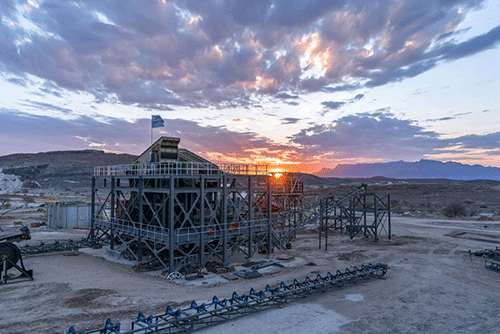AfriTin Mining is convinced it has discovered one of the biggest lithium resources in the world right here in Namibia. Lithium is one of the most sought-after metals in the world right now as its most important use is in rechargeable batteries for mobile phones, laptops, digital cameras and electric vehicles.
In a recent statement, AfriTin CEO Anthony Viljoen said the exploration results “produced lithium grades surpassing our expectations and reinforce our belief that Uis is host to one of the largest lithium resources globally”.
He explained that AfriTin has discovered spodumene, a lithium-bearing mineral, in the 129 mining licence area located some 11 kilometres from the company’s flagship asset, the Uis Tin Mine.
“I am delighted by this new discovery, which reaffirms our development goals and supports the overall strategy of building a diverse portfolio of technology metals,” said the chief executive. In an interview with Mining Weekly, Viljoen added: “The scale of the pegmatite belts is just something that we’ve never seen before”.
Significantly, AfriTin highlighted that the lithium discovery lies within the operational limits of its current Uis Tin Mine processing facility.
“The discovery of spodumene during our current exploration programme is an exciting development that highlights the significant potential of our licence areas in Namibia, and provides a promising target for AfriTin’s operations within the region,” he noted.
AfriTin is conducting an exploration drilling programme on this target during
2022, with the aim of adding to its existing lithium resource at Uis. The lithium and tantalum infill drilling programme is underway at the main pegmatite at Uis, which is currently being mined for tin, to increase the confidence in the existing lithium and tantalum estimates.
“Lithium from these sources can be of interest to both technical and chemical lithium markets, the latter finding application in lithium-ion batteries,” read the AfriTin statement. The company noted that the presence of spodumene was confirmed through laboratory X-ray diffraction analysis of surface grab samples. Four of the five samples collected returned positive results, the best of which yielded a whole rock spodumene content of 10%. “We are very pleased to announce these drilling results, which have produced lithium grades surpassing our expectations, and reinforce our belief that Uis is host to one of the largest lithium resources globally,” Viljoen exclaimed. He added that as a former mining operation, Uis has been extensively drilled, but historic assaying has focused solely on the tin, with no regard for the lithium or tantalum in the deposit.
Now, AfriTin’s programme will increase the confidence of the current lithium and tantalum estimates as part of its strategy to bring these two commodities into production, alongside the tin operation.
“What really adds to the value here is that we are already in production…we simply need to add on a module onto our existing circuit and we can start producing lithium concentrate, which is way ahead of just about every other junior out there,” said Viljoen.
A preliminary economic assessment (PEA) for the Phase 2 expansion of the mine, announced in April, “highlighted the economic potential of these by-product elements which are game-changing”, he added.
“The construction of a new lithium pilot plant will allow us to progress to commercial production phases much faster than a new greenfield lithium resource elsewhere,” Viljoen explained.
It’s envisaged that tin, lithium and tantalum would all be mined in Phase 2 of the mine’s development, resulting in annual gross revenue of US$880 million. Capital expenditure for Phase 2 is set at US$440mln.
“This PEA shows outstanding economics and returns for the expansion, and allows us to move forward with excitement to a full bankable feasibility. The fact that we have successfully brought Phase 1 into production allows us to significantly de-risk phase 2 from the considerable learnings in building a new mine. Phase 2 will see AfriTin produce globally significant volumes of tin, lithium and tantalum, which are vital in meeting the demands of the transition to a new, efficient greener technology future,” he stated.
The historic Uis Mine in Namibia was owned and operated by ISCOR between 1958 and 1991 as a tin mine. AfriTin set out to re-establish the operation in two phases: Phase 1 is a low-capital, cash-generating initial production facility, serving as a pilot for Phase 2, which is planned as a scaled-up version of the initial phase.
Both phases also aim to exploit the tantalum and lithium by-product potential of the deposit.


